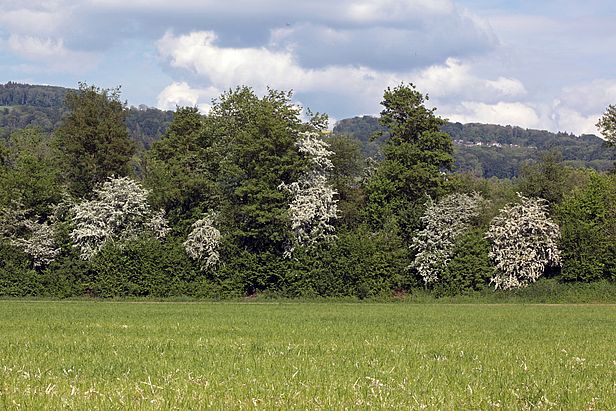18.03.2024 | Ghent University / Fabienne Frey | WSL News
Forests contain a lot of biodiversity and provide many ecosystem services such as carbon storage, wood production, and cooling. However, there is an important difference between the biodiversity and services provided by forest cores and forest edges. This is shown in an international study led by the University of Ghent with the collaboration of the Swiss Federal Institute for Forest, Snow and Landscape Research WSL.
Forests contain certain plant species and provide certain ecosystem services mainly in their core, while other species and services are more likely to be found at the edges. Researchers led by the University of Ghent collaborated with researchers at WSL to investigate these differences. The study, which has been published in the journal Nature Ecology and Evolution, analysed the forest cores and edges of 45 different forests in Europe. Four biodiversity indices and seven ecosystem services were compared. "If we want to better understand, promote, and maintain the functions of European forests, we need to take even better account of the ecological differences between forest cores and forest edges," says Kurt Bollmann, co-author of the study and researcher at WSL.
Ecosystem services vary depending on location and composition ¶
Forest cores for example contain more plants that are typical for forests, such as the wood millet (Milium effusum) or true lover’s knot (Paris quadrifolia), they have a greater diversity of species, and offer more cooling in the summer. Forest edges, on the other hand, contain more plant species, and they have a greater wood production, probably due to the presence of more light and nutrients. Forest edges also offer more nectar to pollinators, and they score better in terms of forest rejuvenation, as the growing conditions for seedlings are better on forest edges.
The structure of the forest also influences the different ecosystem services. Factors such as stratification, crown layer density, and species composition determine which ecosystem services the forest scores higher or lower on. Foresters can therefore propose themselves which ecosystem services they want to maximize in their forest. This can be done through interventions such as thinning, pruning, or species selection.
Forest edges are becoming increasingly important ¶
Until recently, ecosystem services were mainly measured in forest cores because forest edges are often subject to influences and disturbances from the outside. Also, most management and policy advice has been developed for forest cores. Due to increasing forest fragmentation, however, as much as 70% of European forests are located within 1 km of a forest edge, 20% even within 100 meters. The enormous relative share of forest edges inspired the researchers to quantify the contribution of forest edges to ecosystem services and compare them with the forest cores. Bollmann concludes: "The results show that for strategies to promote biodiversity and ecosystem services, integrative forest management that takes into account both the forest edges and cores is important. The study shows that there is no single optimal type of forest management. If we want to maintain a broad range of biodiversity and ecosystem services, then diversity in forest management is essential."
Always up to date: Subscribe to the WSL Newsletter
Contact ¶
Publication ¶
Vanneste, T., Depauw, L., De Lombaerde, E. et al. Trade-offs in biodiversity and ecosystem services between edges and interiors in European forests. Nat Ecol Evol (2024). https://doi.org/10.1038/s41559-024-02335-6
Copyright ¶
WSL and SLF provide image and sound material free of charge for use in the context of press contributions in connection with this media release. The transfer of this material to image, sound and/or video databases and the sale of the material by third parties are not permitted.
